San Juan, Metro Manila
San Juan, officially known as the City of San Juan (Tagalog: Lungsod ng San Juan), is a 1st class highly urbanized city in the National Capital Region of the Philippines. According to the 2020 census, it has a population of 126,347 people. [4] It is geographically located at Metro Manila's approximate center and is also the country's smallest city in terms of land area.
San Juan
Lungsod ng San Juan | |
|---|---|
| City of San Juan | |
   .jpg.webp)  (From top, left to right: Pinaglabanan Shrine • Santuario de Santo Cristo • San Juan City Hall • aerial view of San Juan business district and Greenhills • Diwa ng 1896 Monument) | |
 Flag  Seal | |
| Nickname(s): Dakilang Lungsód ng San Juan (Great City of San Juan) | |
| Motto(s): Diwa ng 1896 ("Spirit of 1896") Makabagong San Juan (Modern San Juan) | |
| Anthem: San Juan, Sagisag ng Kalayaan (English: San Juan, Symbol of Freedom) | |
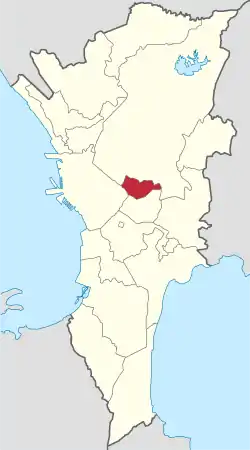 Map of Metro Manila with San Juan highlighted | |
OpenStreetMap 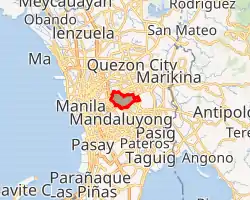 | |
.svg.png.webp) San Juan Location within the Philippines | |
| Coordinates: 14°36′N 121°02′E | |
| Country | Philippines |
| Region | National Capital Region |
| Province | none |
| District | Lone district |
| Founded | 1623 |
| Annexation to San Felipe Neri | October 12, 1903 |
| Chartered | March 27, 1907 |
| Cityhood and HUC | June 17, 2007 |
| Named for | St. John the Baptist |
| Barangays | 21 (see Barangays) |
| Government | |
| • Type | Sangguniang Panlungsod |
| • Mayor | Francisco Javier M. Zamora (PDP–Laban) |
| • Vice Mayor | José Warren P. Villa (PDP–Laban) |
| • Representative | Ronaldo B. Zamora (PDP–Laban) |
| • Councilors | List[2] |
| • Electorate | 82,977 voters (2019) |
| Area | |
| • Total | 5.95 km2 (2.30 sq mi) |
| • Rank | 145th out of 145 |
| Elevation | 24 m (79 ft) |
| Highest elevation | 136 m (446 ft) |
| Lowest elevation | 0 m (0 ft) |
| Population | |
| • Total | 126,347 |
| • Density | 21,000/km2 (55,000/sq mi) |
| • Households | 26,768 |
| Demonym(s) | San Juaneño (Male) San Juaneña (Female) |
| Economy | |
| • Income class | 1st city income class |
| • Poverty incidence | 0.76% (2018)[5] |
| • Revenue | ₱2,338,045,258.00 (2020) |
| • Assets | ₱6,327,062,569.00 (2020) |
| • Expenditure | ₱1,823,480,615.00 (2020) |
| • Liabilities | ₱2,398,017,526.00 (2020) |
| Service provider | |
| • Electricity | Manila Electric Company (Meralco) |
| Time zone | UTC+8 (PST) |
| ZIP code | 1500–1504 |
| PSGC | |
| IDD : area code | +63 (0)02 |
| Native languages | Tagalog |
| Catholic diocese | Archdiocese of Manila |
| Patron saint | John the Baptist |
| Website | sanjuancity |
The city is known historically for the site of the first battle of the Katipunan, the organization which led the 1896 Philippine Revolution against the Spanish Empire. Notable landmarks today such as Pinaglabanan Shrine and heritage homes are located in the city. Other locations include Greenhills and Santolan Town Plaza, making the city a major shopping hub with a range of upscale, boutique and bargain retail.[6]
Etymology
"San Juan" is a contraction of the city's traditional name of "San Juan del Monte" (lit. 'Saint John of the Mountain'). As with numerous other places in the Philippines, the name combines a patron saint and a toponym; in this case Saint John the Baptist with the locale's hilly terrain and relatively higher elevation compared to surrounding areas.
The city's official name is "Dakilang Lungsód ng San Juan" (lit. 'Great City of San Juan').
History
Precolonial and early Spanish colonial periods
During the pre-Hispanic period, the area of what is now San Juan was a part of the Kingdom of Namayan, whose last recorded rulers were King Lacantagean and his consort, Bouan. After the kingdom and other polities in the islands were absorbed into the Spanish Crown in the late 16th century, the realm of Namayan was christened Santa Ana de Sapa. The present area of San Juan was meanwhile re-classified as a barrio, becoming a small encomienda by 1590.
In 1602, the Dominicans built a retreat house in the vicinity for their immediate use, where ageing or convalescing friars stayed. Later, the Order constructed a convent and stone church dedicated to the Holy Cross. To this day, the thrice-rebuilt Santuario del Santo Cristo stands on the same site, adjacent to Aquinas School and Dominican College.
During the Philippine Revolution
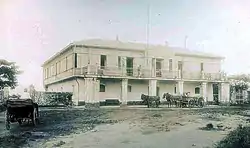
In 1783, San Juan was partitioned from Santa Ana but was still a barrio within the Province of Manila. The El Deposito reservoir was historically known as the site where the onset of the Philippine Revolution through the Battle of San Juan del Monte took place in 1896.[7] The opening salvo against Spain took place in San Juan in 1897 when the Katipunan attacked the alamacén (armoury) or polvorín (gunpowder magazine) of the Spanish East Indies colonial government.
American occupation
San Juan del Monte was later incorporated into the Province of Rizal in 1901 under American military rule. It was merged and placed under San Felipe Neri (present-day Mandaluyong) from 1903 to 1907.[8][9]
Martial law era
San Juan, especially its exclusive subdivisions in Greenhills, was home to many prominent personalities during the Philippines' Martial Law era. This included several Armed Forces of the Philippines Generals, including Romeo Espino, Alfredo Montoya, and Romeo Gatan,[10] who would later be tagged as members of the "Rolex 12";[11] Imelda Marcos’ secretary Fe Jimenez Roa;[10] Presidential Assistant on Legal Affairs Ronaldo Zamora, who would later become a Congressman for the lone congressional district of San Juan;[10] San Juan Mayor Joseph Estrada, who would later become President of the Philippines;[10] and prominent journalist Maximo Soliven, who was imprisoned when President Ferdinand Marcos first declared Martial Law in September 1972.[10]
Incorporation into Metro Manila
When Presidential Decree No. 824 establishing the National Capital Region was signed on November 7, 1975, San Juan was among the towns excised from Rizal Province.
People Power Revolution
Club Filipino, which had relocated to San Juan in 1970 from its original location in Santa Mesa, became an important part of the establishment of the Fifth Philippine Republic when President Corazon Aquino was inaugurated there on February 25, 1986, the last day of the civilian-led 1986 People Power Revolution.[12]
Contemporary era
In 1992, San Juan had the least number of squatter families out of all the municipalities and cities in Metro Manila based on data from the National Housing Authority.[13]
Cityhood
Residents ratified the conversion of the municipality into a highly urbanized city on June 17, 2007, pursuant to Republic Act No. 9388 ("An Act Converting the Municipality of San Juan into a Highly Urbanized City to be known as the City of San Juan"). Then-Representative Ronaldo Zamora sponsored the Cityhood Bill in the House of Representatives and worked for its approval.[14]
Presidential ties
Although not officially designated as such, San Juan is noted to be the "City of Philippine Presidents." Four presidents since the Third Republic were official residents of San Juan when they assumed office. They were the Macapagal père et fille, Diosdado (1961–1965) and Gloria Macapagal Arroyo (2001–2010); Ferdinand Marcos (1965–1986); and Joseph Estrada (1998–2001), who also served as Mayor when San Juan was still a municipality.
Geography
San Juan is the least-extensive city in the Philippines with a total area of just 595 hectares (2.30 sq mi).
San Juan is bounded by Quezon City on the north and east, Mandaluyong on the south, and the City of Manila in the west.
The territory of San Juan was once much larger than it is now, extending all the way to what is now Caloocan. Parts of the present-day Districts 1, 4 and 6 of Quezon City as well as areas of Mandaluyong were originally within the town's colonial-era borders. This also explains why San Juan Reservoir is in nearby Horseshoe Village, a subdivision now part of Quezon City.
Climate
| Climate data for San Juan | |||||||||||||
|---|---|---|---|---|---|---|---|---|---|---|---|---|---|
| Month | Jan | Feb | Mar | Apr | May | Jun | Jul | Aug | Sep | Oct | Nov | Dec | Year |
| Average high °C (°F) | 29 (84) |
30 (86) |
32 (90) |
34 (93) |
33 (91) |
31 (88) |
30 (86) |
29 (84) |
29 (84) |
30 (86) |
30 (86) |
29 (84) |
31 (87) |
| Average low °C (°F) | 20 (68) |
20 (68) |
21 (70) |
23 (73) |
24 (75) |
25 (77) |
24 (75) |
25 (77) |
24 (75) |
23 (73) |
22 (72) |
21 (70) |
23 (73) |
| Average precipitation mm (inches) | 7 (0.3) |
7 (0.3) |
9 (0.4) |
21 (0.8) |
101 (4.0) |
152 (6.0) |
188 (7.4) |
170 (6.7) |
159 (6.3) |
115 (4.5) |
47 (1.9) |
29 (1.1) |
1,005 (39.7) |
| Average rainy days | 3.3 | 3.5 | 11.1 | 8.1 | 18.9 | 23.5 | 26.4 | 25.5 | 24.5 | 19.6 | 10.4 | 6.4 | 181.2 |
| Source: Meteoblue[15] | |||||||||||||
Barangays

San Juan is politically subdivided and comprises into 21 barangays organized into two congressional districts:
| PSGC | Barangay | Population | ±% p.a. | Area | PD 2020 | District | Date of Fiesta | |||||
|---|---|---|---|---|---|---|---|---|---|---|---|---|
| 2020 [4] | 2010 [16] | ha | acre | /km2 | /sq mi | |||||||
| 137405001 | Addition Hills | 3.0% | 3,818 | 3,364 | 1.27% | 3,582 | 8,851 | 110 | 280 | 2 | ||
| 137405002 | Balong–Bato | 5.7% | 7,203 | 7,141 | 0.09% | 2,451 | 6,057 | 290 | 760 | 1 | 1 March[17] | |
| 137405003 | Batis | 7.5% | 9,453 | 9,292 | 0.17% | 3,510 | 8,674 | 270 | 700 | 1 | ||
| 137405004 | Corazón de Jesús | 6.2% | 7,875 | 10,475 | −2.81% | 3,302 | 8,160 | 240 | 620 | 1 | ||
| 137405005 | Ermitaño | 5.0% | 6,361 | 2,846 | 8.37% | 1,379 | 3,408 | 460 | 1,200 | 1 | ||
| 137405021 | Greenhills | 12.0% | 15,212 | 12,548 | 1.94% | 20,786 | 51,364 | 73 | 190 | 2 | 24 August[18] | |
| 137405006 | Isabelita | 1.2% | 1,556 | 1,620 | −0.40% | 344 | 850 | 450 | 1,200 | 2 | ||
| 137405007 | Kabayanan | 4.4% | 5,601 | 5,584 | 0.03% | 1,798 | 4,443 | 310 | 810 | 2 | ||
| 137405008 | Little Baguio | 5.0% | 6,275 | 6,110 | 0.27% | 4,371 | 10,801 | 140 | 370 | 2 | ||
| 137405009 | Maytunas | 2.2% | 2,775 | 2,699 | 0.28% | 2,078 | 5,135 | 130 | 350 | 2 | ||
| 137405010 | Onse | 3.0% | 3,736 | 4,262 | −1.31% | 967 | 2,390 | 390 | 1,000 | 2 | 30 November[19] | |
| 137405011 | Pasadeña | 3.5% | 4,417 | 3,919 | 1.20% | 2,425 | 5,992 | 180 | 470 | 1 | ||
| 137405012 | Pedro Cruz | 3.3% | 4,135 | 4,012 | 0.30% | 1,843 | 4,554 | 220 | 580 | 1 | ||
| 137405013 | Progreso | 1.3% | 1,669 | 1,679 | −0.06% | 410 | 1,013 | 410 | 1,100 | 1 | ||
| 137405014 | Rivera | 1.9% | 2,381 | 2,866 | −1.84% | 606 | 1,497 | 390 | 1,000 | 1 | ||
| 137405015 | Saint Joseph (Halo-Halo) | 1.7% | 2,135 | 4,489 | −7.16% | 381 | 941 | 560 | 1,500 | 2 | 19 March[20] | |
| 137405016 | Salapán | 7.0% | 8,865 | 8,773 | 0.10% | 1,773 | 4,381 | 500 | 1,300 | 1 | ||
| 137405017 | San Perfecto | 3.7% | 4,618 | 4,131 | 1.12% | 803 | 1,984 | 580 | 1,500 | 1 | ||
| 137405018 | Santa Lucia | 6.4% | 8,092 | 6,370 | 2.42% | 3,106 | 7,675 | 260 | 670 | 2 | ||
| 137405019 | Tibagan | 3.0% | 3,817 | 3,826 | −0.02% | 1,739 | 4,297 | 220 | 570 | 2 | ||
| 137405020 | West Crame | 12.9% | 16,353 | 15,424 | 0.59% | 1,769 | 4,371 | 920 | 2,400 | 2 | ||
| Total | 126,347 | 68,578 | 6.30% | 595 | 1,470 | 21,000 | 55,000 | |||||
Demographics
| Year | Pop. | ±% p.a. |
|---|---|---|
| 1903 | 1,455 | — |
| 1918 | 6,172 | +10.11% |
| 1939 | 18,870 | +5.47% |
| 1948 | 31,493 | +5.86% |
| 1960 | 56,861 | +5.05% |
| 1970 | 104,559 | +6.27% |
| 1975 | 122,492 | +3.23% |
| 1980 | 130,088 | +1.21% |
| 1990 | 126,854 | −0.25% |
| 1995 | 124,187 | −0.40% |
| 2000 | 117,680 | −1.15% |
| 2007 | 125,338 | +0.87% |
| 2010 | 121,430 | −1.15% |
| 2015 | 122,180 | +0.12% |
| 2020 | 126,347 | +0.66% |
| Source: Philippine Statistics Authority [21] [16] [22][23] | ||
Religion
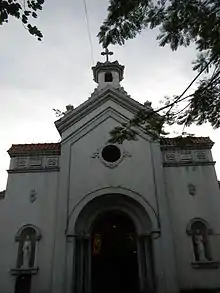
The city also has several notable places of worship. Saint John the Baptist Parish, more commonly known as "Pinaglabanan Church", is where the city's patron saint, John the Baptist, is enshrined. The Santuario del Santo Cristo is the settlement's oldest existing church, while Mary the Queen Parish in West Greenhills serves the local Filipino-Chinese community.
From 1925 to 1971, the Iglesia ni Cristo once headquartered in the town at its former Central Office Complex, now known as the Locale of F. Manalo. It features Art-Deco designed ensembles, crafted by National Artist for Architecture Juan Nakpil. The chapel is the centerpiece of the Complex, which also contains the old Central Office and Pastoral House which was the home of the church's first Executive Minister, Ka Felix Manalo, along with other Ministers and Evangelical Workers. When Manalo died in 1963, a mausoleum was constructed on the grounds of the Complex by architect Carlos Santos-Viola.
San Juan also has a number of Evangelical churches. Through the APOI (Association of Pastors for Outreach and Intercession), they have contributed to the spiritual atmosphere of the city. Every January, the city celebrates the National Bible Week, where the reading of the Scripture happens during the flag raising ceremony in the City Hall. Through the blessing of the mayor, a bible was planted in the heart of the new city hall during its construction. Major evangelical churches like Jesus is Lord and Victory Greenhills are also found in the city of San Juan.
San Juan is also home to two Islamic mosques, namely: Masjid Hamza Bin Ahmed in Balong-Bato and Greenhills Masjid at Greenhills Shopping Center.
Economy
The Greenhills Shopping Center is the hub of trade and commerce in San Juan. The shopping complex housed shopping malls, the Virra Mall, Shoppesville, Greenhills Theater Mall, Promenade Mall, the former Greenhills Bowling Alley, and Unimart.
Transportation
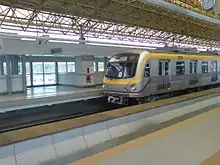
Modes of public transportation in San Juan include jeepneys and buses. Jeepney routes ply the Aurora Boulevard (R-6). The city is serviced by J. Ruiz station of the LRT Line 2 in the city proper and indirectly served by Santolan-Annapolis station of the MRT Line 3, at the city's eastern boundary with Quezon City. The C-3 (Araneta Avenue) also passes through San Juan. Secondary routes include Nicanor Domingo (abbreviated N. Domingo), which heads towards Cubao in Quezon City, and Pinaglabanan Street (which continues as Santolan Road) leading towards Ortigas Avenue and eventually the southern reaches of Quezon City near Camp Crame, the headquarters of the Philippine National Police.
Education
The Polytechnic University of the Philippines maintains a campus in the residential neighborhood of Addition Hills in San Juan.
Notable personalities
- Jake Ejercito, actor
- Joseph Estrada, 13th President of the Philippines, 9th Vice President of the Philippines, 26th Mayor of Manila, 14th San Juan Mayor, actor[31]
- Teofisto Guingona Jr., 11th Vice President of the Philippines
- Ophelia Dimalanta, poet, editor, author, and teacher.
- Grace Poe, senator and former MTRCB chairwoman[32]
- Franklin Drilon, senator[33]
- JV Ejercito, former San Juan Mayor and former senator[31]
- Jinggoy Estrada, former San Juan Mayor, former senator, actor[31]
- Francis Zamora, former Vice Mayor and incumbent Mayor (since 2019)[34]
- Ronaldo Zamora, congressman[35]
- Edu Manzano, actor and former US Military officer[36]
- Alfred Vargas, actor and Quezon City congressman
- Eraño Manalo, former Iglesia ni Cristo Executive Minister from 1963 to 2009
- Gabby Concepcion, actor
- Jaymee Joaquin, former TV host
- Luis Manzano, actor and TV host
- Joross Gamboa, actor
- Janella Salvador, actress singer artist
- Ericka Villongco, singer and actress
- Krissy Villongco, singer
- Don Allado, basketball player and coach
- Paul Artadi, basketball player and District 1 councilor
- Philip Cezar, PBA Player aka "Tapal King", vice mayor (1992-2001) and current basketball coach
- Chris Tiu, tv host and basketball player
- Yasmien Kurdi, actress
- James Yap, basketball player
Sister cities
International
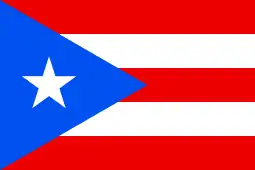 San Juan, Puerto Rico
San Juan, Puerto Rico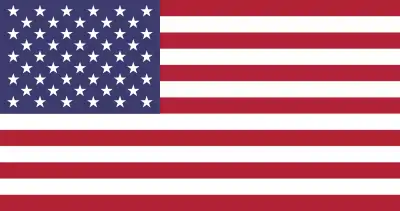 Maui, Hawaii, United States[39]
Maui, Hawaii, United States[39] Santa Barbara, California, United States[40][41]
Santa Barbara, California, United States[40][41]
Gallery
.jpg.webp) City of San Juan Government Center
City of San Juan Government Center.jpg.webp) Santuario del Santo Cristo
Santuario del Santo Cristo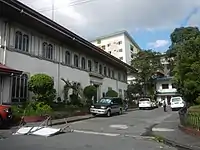 Sn. Juan Del Monte Presidencia, San Juan Medical Center
Sn. Juan Del Monte Presidencia, San Juan Medical Center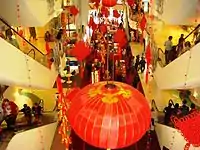 V-Mall
V-Mall.jpg.webp) Inside of Greenhills Shopping Center
Inside of Greenhills Shopping Center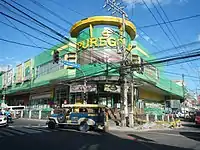 Puregold Agora Market
Puregold Agora Market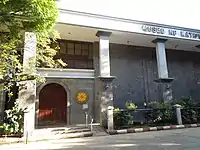 Museo ng Katipunan
Museo ng Katipunan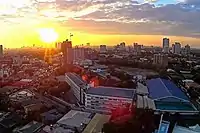 Panoramic view of San Juan from Xavier School Greenhills
Panoramic view of San Juan from Xavier School Greenhills
References
- City of San Juan | (DILG)
- Councilors of San Juan, Metro Manila.
- "2015 Census of Population, Report No. 3 – Population, Land Area, and Population Density" (PDF). Philippine Statistics Authority. Quezon City, Philippines. August 2016. ISSN 0117-1453. Archived (PDF) from the original on May 25, 2021. Retrieved July 16, 2021.
- Census of Population (2020). "National Capital Region (NCR)". Total Population by Province, City, Municipality and Barangay. PSA. Retrieved 8 July 2021.
- https://psa.gov.ph/sites/default/files/Table%202a.%20Updated%20Annual%20Per%20Capita%20Poverty%20Threshold%2C%20Poverty%20Incidence%20and%20Magnitude%20of%20Poor%20Population%20with%20Measures%20of%20Precision%2C%20%20by%20Region%2C%20Province%20and%20HUC_2018.xlsx; publication date: 4 June 2020; publisher: Philippine Statistics Authority.
- "A short and sweet historical tour of San Juan City". The Manila Times. Retrieved July 26, 2018.
- "National Historical Commission of the Philippines official website". Pinaglabanan Memorial Shrine.
- "An Act Reducing the Thirty-Two Municipalities of the Province of Rizal to Fifteen". Act No. 942 of October 12, 1903. Retrieved May 1, 2022.
- Act No. 1625 of March 27, 1907. Retrieved May 1, 2022.
- Soliven, Preciosa S. "North Greenhills 39 years ago". The Philippine Star. Retrieved August 21, 2021.
- "The Final Report of the Fact-Finding Commission: II: Political Change and Military Transmition in the Philippines, 1966 – 1989: From the Barracks to the Corridors of Power". Official Gazette. October 3, 1990. Retrieved September 23, 2020.
- "FAST FACTS: Presidential inauguration traditions and rituals". Rappler. Retrieved August 21, 2021.
- Beltran, Luis D. (October 11, 1992). "Health care: a luxury we can no longer afford". Manila Standard. Kamahalan Publishing Corp. p. 9. Retrieved October 25, 2021.
- Republic Act No. 9388 (11 March 2007), An Act converting the municipality of San Juan into a highly urbanized city to be known as the city of San Juan (PDF), archived from the original (PDF) on October 6, 2007
- "San Juan: Average Temperatures and Rainfall". Meteoblue. Retrieved May 13, 2020.
- Census of Population and Housing (2010). "National Capital Region (NCR)". Total Population by Province, City, Municipality and Barangay. NSO. Retrieved 29 June 2016.
- "Facebook". www.facebook.com. Retrieved 2022-03-21.
- "Barangay Greenhills". www.facebook.com. Retrieved 2022-01-20.
- "Mayor Francis Zamora". www.facebook.com. Retrieved 2022-03-21.
- "Facebook". www.facebook.com. Retrieved 2022-03-21.
- Census of Population (2015). "National Capital Region (NCR)". Total Population by Province, City, Municipality and Barangay. PSA. Retrieved 20 June 2016.
- Censuses of Population (1903–2007). "National Capital Region (NCR)". Table 1. Population Enumerated in Various Censuses by Province/Highly Urbanized City: 1903 to 2007. NSO.
- "Province of Metro Manila, 2nd (Not a Province)". Municipality Population Data. Local Water Utilities Administration Research Division. Retrieved 17 December 2016.
- "Poverty incidence (PI):". Philippine Statistics Authority. Retrieved 28 December 2020.
- https://psa.gov.ph/sites/default/files/NSCB_LocalPovertyPhilippines_0.pdf; publication date: 29 November 2005; publisher: Philippine Statistics Authority.
- https://psa.gov.ph/sites/default/files/2003%20SAE%20of%20poverty%20%28Full%20Report%29_1.pdf; publication date: 23 March 2009; publisher: Philippine Statistics Authority.
- https://psa.gov.ph/sites/default/files/2006%20and%202009%20City%20and%20Municipal%20Level%20Poverty%20Estimates_0_1.pdf; publication date: 3 August 2012; publisher: Philippine Statistics Authority.
- https://psa.gov.ph/sites/default/files/2012%20Municipal%20and%20City%20Level%20Poverty%20Estima7tes%20Publication%20%281%29.pdf; publication date: 31 May 2016; publisher: Philippine Statistics Authority.
- https://psa.gov.ph/sites/default/files/City%20and%20Municipal-level%20Small%20Area%20Poverty%20Estimates_%202009%2C%202012%20and%202015_0.xlsx; publication date: 10 July 2019; publisher: Philippine Statistics Authority.
- https://psa.gov.ph/sites/default/files/Table%202a.%20Updated%20Annual%20Per%20Capita%20Poverty%20Threshold%2C%20Poverty%20Incidence%20and%20Magnitude%20of%20Poor%20Population%20with%20Measures%20of%20Precision%2C%20%20by%20Region%2C%20Province%20and%20HUC_2018.xlsx; publication date: 4 June 2020; publisher: Philippine Statistics Authority.
- Emeritus, Dr Dante A. Ang-Chairman (2021-10-15). "Lunch with former President Estrada". The Manila Times. Retrieved 2021-12-19.
- "TIMELINE: Grace Poe's citizenship, residency". RAPPLER. 2015-09-04. Retrieved 2021-12-19.
- INQUIRER.net (2014-11-12). "Drilon's 'kleptocracy' exposed ahead of Senate probe into Iloilo Convention Center". INQUIRER.net. Retrieved 2021-12-19.
- Agoncillo, Jodee A. (2020-08-18). "Zamora: No quarantine rule violations". INQUIRER.net. Retrieved 2021-12-19.
- "Who's the real son of San Juan? Francis Zamora says he's been in the city all his life". politics.com.ph. 2015-07-11. Retrieved 2021-12-19.
- Talabong, Rambo (May 9, 2019). "Edu Manzano stands his ground: San Juan can still vote for me". Rappler. Retrieved December 19, 2021.
{{cite web}}: CS1 maint: url-status (link) - sunstar.com.ph, Davao, San Juan cities ink sisterhood pact Archived October 8, 2008, at the Wayback Machine
- Tayona, Glenda; Silubrico, Ruby (August 25, 2018). "Iloilo to showcase culture to 'sister cities' tonight". Panay News. Archived from the original on April 9, 2019. Retrieved April 9, 2019.
- "San Juan, Philippines & Maui, Hawaii". Washington, DC: Sister Cities International. Retrieved 2015-02-04.
- "Socal Sister Cities Directory". Southern California Sister Cities Directory. SoCal Chapter Inc. Retrieved 2015-02-05.
- "San Juan, Philippines & Santa Barbara, California". Washington, DC: Sister Cities International. Retrieved 2015-02-04.
External links
| Wikivoyage has a travel guide for San Juan (Metro Manila). |
| Wikimedia Commons has media related to San Juan, Metro Manila. |
- Official website
- Philippine Standard Geographic Code
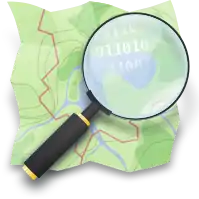 Geographic data related to San Juan, Metro Manila at OpenStreetMap
Geographic data related to San Juan, Metro Manila at OpenStreetMap